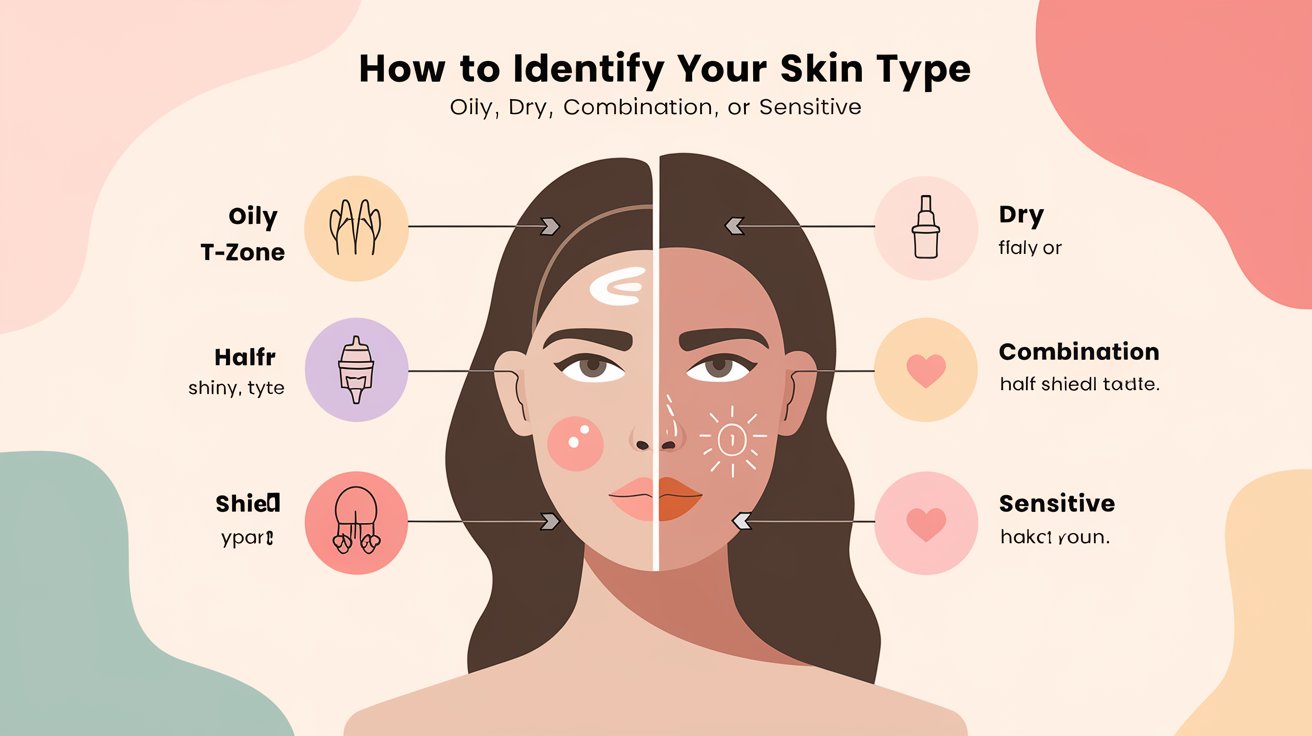How to Identify Your Skin Type: Oily, Dry, Combination, or Sensitive
Introduction
Understanding your skin type is the first step toward achieving healthy, glowing skin. Whether you’re dealing with excess oil, dryness, or sensitivity, knowing your skin type helps you choose the right products and create an effective skincare routine.
But how do you figure out if your skin is oily, dry, combination, or sensitive? In this article, we’ll break down the characteristics of each skin type, provide simple tests to identify yours, and recommend the best products available on Amazon to care for your unique skin needs.
Why Knowing Your Skin Type Matters
Your skin type is determined by genetics, but it can also be influenced by factors like climate, age, and lifestyle. Using products that aren’t suited to your skin type can lead to issues like breakouts, irritation, or excessive dryness. By identifying your skin type, you can:
- Choose the right cleansers, moisturizers, and treatments.
- Address specific concerns like acne, flakiness, or redness.
- Achieve a balanced, healthy complexion.
The 4 Main Skin Types
Let’s dive into the characteristics of each skin type and how to identify yours.
1. Oily Skin
Characteristics:
- Shiny or greasy appearance, especially in the T-zone (forehead, nose, and chin).
- Enlarged pores.
- Prone to acne, blackheads, and whiteheads.
How to Test for Oily Skin:
- Wash your face with a gentle cleanser and pat it dry.
- Wait 30 minutes without applying any products.
- If your skin looks shiny all over, you likely have oily skin.
Skincare Tips for Oily Skin:
- Use a lightweight, oil-free moisturizer to avoid clogging pores.
- Incorporate products with salicylic acid or niacinamide to control oil and prevent breakouts.
- Avoid heavy, greasy products that can exacerbate oiliness.
Amazon Product Recommendations:
- CeraVe Foaming Facial Cleanser – A gentle cleanser that removes excess oil without stripping the skin.
- La Roche-Posay Effaclar Mat Face Moisturizer – A mattifying moisturizer that controls shine and minimizes pores.
- The Ordinary Niacinamide 10% + Zinc 1% – A serum that regulates sebum production and reduces blemishes.
2. Dry Skin
Characteristics:
- Tight, flaky, or rough texture.
- Dull complexion.
- Prone to redness, irritation, and fine lines.
How to Test for Dry Skin:
- Wash your face with a gentle cleanser and pat it dry.
- Wait 30 minutes without applying any products.
- If your skin feels tight, itchy, or looks flaky, you likely have dry skin.
Skincare Tips for Dry Skin:
- Use a rich, hydrating moisturizer to lock in moisture.
- Look for products with hyaluronic acid, ceramides, or glycerin.
- Avoid harsh cleansers or exfoliants that can strip your skin of natural oils.
Amazon Product Recommendations:
- CeraVe Hydrating Facial Cleanser – A non-foaming cleanser that nourishes dry skin.
- First Aid Beauty Ultra Repair Cream – A deeply hydrating moisturizer for dry, sensitive skin.
- The Ordinary Hyaluronic Acid 2% + B5 – A hydrating serum that plumps and moisturizes the skin.
3. Combination Skin
Characteristics:
- Oily T-zone (forehead, nose, and chin) with dry or normal cheeks.
- Enlarged pores in the T-zone.
- Prone to both dryness and breakouts.
How to Test for Combination Skin:
- Wash your face with a gentle cleanser and pat it dry.
- Wait 30 minutes without applying any products.
- If your T-zone is shiny but your cheeks feel dry or normal, you likely have combination skin.
Skincare Tips for Combination Skin:
- Use a balanced cleanser that doesn’t over-dry or over-moisturize.
- Apply lightweight moisturizers to the entire face and target oily areas with oil-control products.
- Exfoliate regularly to prevent clogged pores in the T-zone.
Amazon Product Recommendations:
- Neutrogena Hydro Boost Hydrating Cleansing Gel – A gentle cleanser that hydrates dry areas and controls oil.
- Olay Regenerist Micro-Sculpting Cream – A moisturizer that balances hydration for combination skin.
- Paula’s Choice Skin Perfecting 2% BHA Liquid Exfoliant – A chemical exfoliant that unclogs pores and smooths skin.
4. Sensitive Skin
Characteristics:
- Easily irritated by products, weather, or environmental factors.
- Prone to redness, itching, or burning.
- May have conditions like rosacea or eczema.
How to Test for Sensitive Skin:
- Pay attention to how your skin reacts to new products or environmental changes.
- If your skin often feels irritated, red, or itchy, you likely have sensitive skin.
Skincare Tips for Sensitive Skin:
- Use fragrance-free, hypoallergenic products designed for sensitive skin.
- Patch-test new products before applying them to your face.
- Avoid harsh ingredients like alcohol, sulfates, or synthetic fragrances.
Amazon Product Recommendations:
- Vanicream Gentle Facial Cleanser – A mild cleanser free of common irritants.
- Aveeno Calm + Restore Oat Gel Moisturizer – A soothing moisturizer for sensitive skin.
- La Roche-Posay Toleriane Ultra Sensitive Skin Moisturizer – A calming moisturizer that reduces redness and irritation.
Bonus: How to Care for Your Skin Type
Once you’ve identified your skin type, follow these general tips to keep your skin healthy:
- Cleanse Twice Daily: Use a gentle cleanser suited to your skin type.
- Moisturize Daily: Even oily skin needs hydration—choose a lightweight formula if you’re prone to shine.
- Wear Sunscreen: Protect your skin from UV damage with a broad-spectrum SPF.
- Exfoliate Regularly: Remove dead skin cells to reveal a brighter complexion, but don’t overdo it.
- Stay Consistent: Stick to a routine for at least 4-6 weeks to see results.
Conclusion
Identifying your skin type is the foundation of a successful skincare routine. Whether you have oily, dry, combination, or sensitive skin, understanding its unique needs allows you to choose the right products and achieve a healthy, radiant complexion.
Remember, your skin type can change over time due to factors like age, climate, or hormonal shifts, so it’s a good idea to reassess your skin periodically. With the right care and products, you can keep your skin looking its best at every stage of life.
